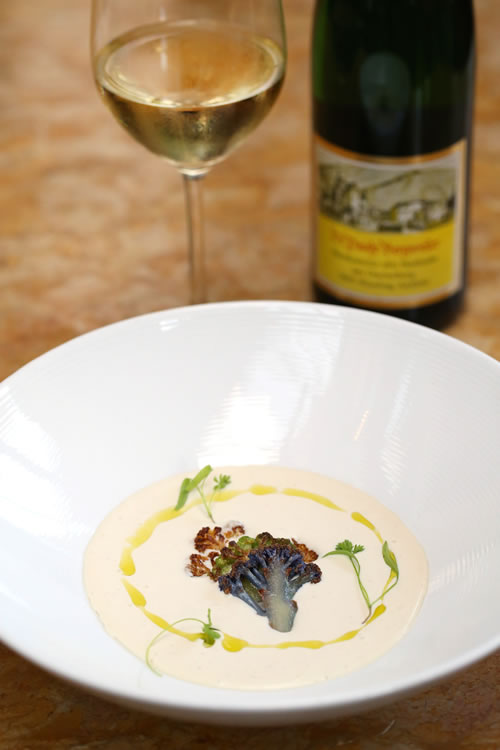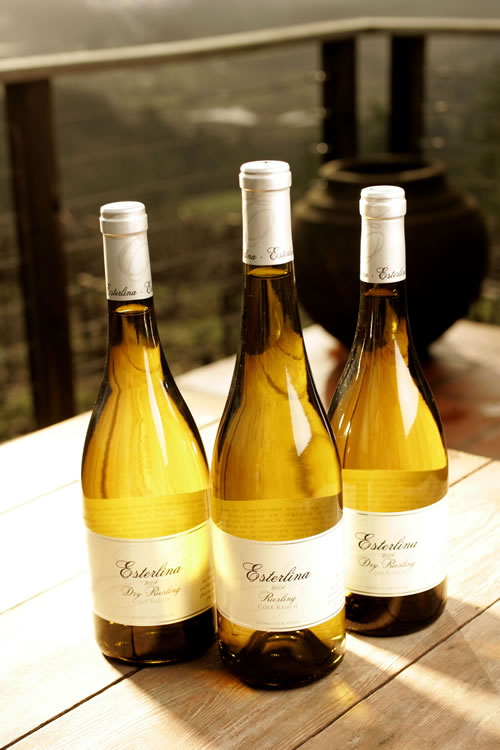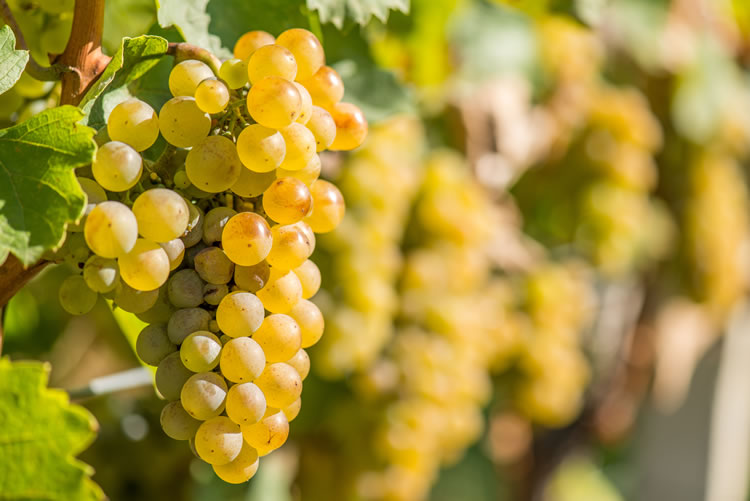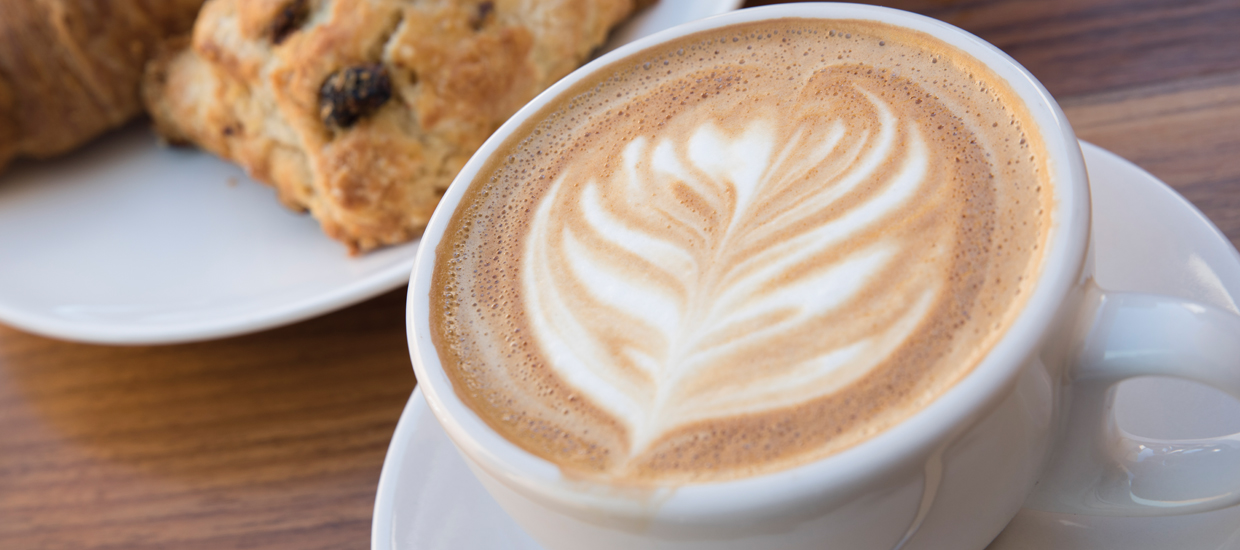 With its balance of acidity, lightness and versatility, this white wine is the drink of choice for all seasons, palates and cuisine.
With its balance of acidity, lightness and versatility, this white wine is the drink of choice for all seasons, palates and cuisine.
By Maria Hunt
Riesling, a white wine that ranges from dry to sweet, is considered one of the great white grapes, yet it just may be the most difficult to define. Fine riesling has a quixotic quality and is an extremely adaptable grape capable of producing world-class wines in all styles, from bone dry to sparkling to intensely sweet.
“Riesling can be made in so many different styles; it [also] pairs with so many different types of food,” says Stephen Sterling, who grows riesling at Esterlina Vineyards, his family’s winery in Northern California’s Anderson Valley.
And perhaps that’s why so many sommeliers have a deep appreciation for it. Lately, more wine drinkers are discovering the charms of riesling, whether it’s dry, dessert sweet or somewhere in between.
“It’s been a sommelier darling, and it’s developing [a following] because of the quality,” says Willi Sherer, a master sommelier based in Napa Valley, Calif. “I think it’s OK that riesling can be a million different things.”
Back in 2008, a bar called Terroir E.Vil (short for East Village) in New York City hosted a Summer of Riesling promotion, a national initiative to promote the wine. The next year, German wine queen—comparable to a Miss America of wine—Julie Bertram came to lend her smile to the promotion. By 2013, more than 500 trendy restaurants and bars around the U.S., including Sepia in Chicago, Gramercy Tavern in New York and The French Laundry in Yountville, Calif., had joined the Summer of Riesling—thus, pushing the wine to the next level of stardom.
International Vines
While the most famous riesling wines in the world come from Germany and the Alsace region in France, the varietal also thrives in places like Australia, the state of Washington, New York, Oregon and California’s Mendocino County.

The terroir—a combination of the soil, climate and terrain—influences the way rieslings and other wines taste. Riesling grapes flourish in cool climates with good sunlight and a long growing season. It also needs well-drained soil that retains heat, due to lots of slate or sand, says Karen MacNeil, who directs the Rudd Center for Professional Wine Studies at the Culinary Institute of America.
The grapes will have slightly different flavors and aromas depending on where they’re grown, but a common characteristic of well-made rieslings is refreshing acidity. Some have an aroma that’s similar to petrol or gasoline.
MacNeil suggests starting exploration with a riesling from Eroica or Poet’s Leap in Washington, or from Grosset Wines in Australia. Next, she recommends tackling Austria and Alsace with wines from Schloss Gobelsburg and Trimbach.
“On one hand, it has the flavors of peach and apricot and often very subtle and sometimes exotic citrus like mandarin orange,” MacNeil says. “It has the kind of purity of mountain stream water. It’s a very pristine flavor.”
And then there’s that elusive minerality—some describe it as the aroma from wet slate after rain. But MacNeil, who has studied the concept for more than 20 years, says minerality in riesling is more of a textural component. “To me, it’s not a flavor, it’s a feeling,” MacNeil says. “It’s like the texture of having little rocks in your mouth. The closest thing to it may be salinity. I think there may be an aroma there too, but it’s a very complex phenomenon.”
Diners find several different international rieslings on the wine list at The St. Regis Atlanta in Buckhead. Sommelier Jennifer Sollinger says it often takes some work to get a diner to try riesling instead of chardonnay or sauvignon blanc. “I kind of feel like I’m here on an island,” says Sollinger, a riesling fan. “I have to tell them to trust me.”
She loves rieslings from the Mosel region in Germany, like the 2005 Dr. Pauly-Bergweiler riesling auslese, which tends to have aromas and flavors of white flowers and stone fruit like peaches and apricots. She paired the wine recently with a cauliflower puree soup with a basil oil drizzle. The rieslings from the Rheingau region (also in Germany), such as the 2007 Josef Leitz Rudesheimer Klosterlay, are more about minerality and have a heavier weight with subtle hints of flowers and fruit.
She admits, though, it took her a while to warm up to riesling when she first started working in high-end restaurants in the Seattle area. “I saw a Charles Smith Washington state riesling called Kung Fu Girl, and I said, ‘Let’s try it out,’ ” Sollinger explains. “It kind of set the tone for my experience with Washington state. It was peaches and apricots … and racy acidity, and it didn’t have a lot of sugar. “Washington state puts out beautiful rieslings with a little minerality and stone fruit.”
The Anderson Valley in Northern California’s Mendocino County is another area acclaimed for its rieslings. The valley is most famous for pinot noir but was first planted in aromatic cool-climate varietals including riesling and gewurztraminer, which are celebrated in the annual Alsace Varietals Festival, hosted by the Anderson Valley Winegrowers Association.
“Actually, when we first got the property, my brothers wanted to pull up the riesling and plant something else,” says Sterling, who is also on the board of directors at Sonoma State University’s Wine Business Institute.
But his father, who’s been farming for years, researched the crop reports and realized that hardly anyone in California was growing riesling at the time. “We thought when riesling came back into demand, we would be one of the few places that had it. And the rest is history,” Sterling adds.
In fact, Esterlina Vineyards’ off-dry and dry rieslings were poured at the White House twice during the Bush administration. “That fact alone frankly justifies keeping the riesling as one of our varietals,” Sterling says. Another of the family’s wines was featured at the eco-friendly Green Ball for the 2013 Obama inauguration.
The Wine Redemption
While the white wine most famously grown in Germany’s Mosel and Rheingau regions is becoming fashionable like never before, it had to first overcome a few hurdles that included misconceptions and a poor public image.

“Finally, the message has gotten out that most riesling in the world is dry,” says MacNeil, who is also author of “The Wine Bible.” “It’s amazing that for so long the incorrect perception that riesling was sweet persisted in American culture.”
MacNeil says that just after World War II, some cash-strapped German wineries did make very sweet wines to cater to American soldiers. For some people, their exploration of riesling grapes stopped there. Yet, by the 1970s and 1980s, more wine drinkers discovered that most rieslings from Germany were dry.
In the 1980s, riesling garnered a poor reputation thanks to an abundance of overly sweet varieties flooding the market. Subsequently, many avoid the wine, assuming it will be sweet and unsophisticated.
“That’s one of the paradoxes of American culture,” MacNeil says. “Do you know how much residual sugar Coca-Cola has? About 12 percent. A typical German riesling even off-dry has maybe 2.5 percent.
“The fact we as a country regularly drink soft drinks every day of our lives … but are somehow offended by the idea of sweetness in riesling is just crazy,” she continues.
Tim Hanni, a master of wine based in Napa Valley, says people need to relax and just let everyone drink the kinds of wines they like, whether sweet, bone-dry or somewhere in between.
Hanni, who’s done extensive research on taste, says two things determine the foods and wines people like: physiology or genetic background. So, while a certain style of wine is palatable to one individual’s taste, it does not mean that another individual is going to perceive it the same way.
In his book, “Why You Like the Wines You Like,” Hanni includes a number of questions that he’s able to use to pinpoint many different aspects of a wine drinkers’ preferences for everything from clothing to fragrance.
“The people with by far the most taste buds are typically sweet wine drinkers,” Hanni says. “The French, historically, always preferred sweet wines, and they would drink them throughout the meal. But the wine industry, very unfortunately, … has disenfranchised sweet wine drinkers and made them feel embarrassed.”
Hanni says that since the mid-1960s, he’s been hearing that riesling is going to be the next big wine that everybody starts drinking. Now, the wine is finally getting its time in the spotlight because of better communication with the consumer. He points to the International Riesling Foundation, an association of producers, which has created a standardized and consistent sweetness scale, as a major player that has improved consumer relations. The Riesling Taste Profile, which producers may use on their wine labels, tells consumers the sweetness level of the wine. The label now appears on more than 26 million bottles in the U.S. market. “We have to say there is a riesling for everybody and that’s kind of the range,” Hanni says.
No matter the level of sugariness, drinking a fine riesling that seems to evaporate on the palate while delivering a symphony of flavors is akin to a spiritual experience. “It’s so fascinating and ethereal it’s almost not corporeal,” MacNeil says. “It’s the same reason it was loved by the monks of Germany. It packs a big punch of flavor on one hand, but it seems like a feather.”
***
Sweet Pairings
Highly touted for its food adaptability, riesling complements any meal.
Similar to many other food-friendly wines—pinot noir and sauvignon blanc—riesling has a natural acidity and delicacy that enhances many different flavors. What other wine could pair as well with Thai curry, cracked crab and quiche Lorraine as it does with peach pie?

Since riesling can be made in so many different styles and sweetness levels, it offers endless pairing options. “The sweetness is really good with food, especially with dishes that have caramelization, or a lot of foods from Asia or barbecue,” says Willi Sherer, a master sommelier who also runs the wine program at Redd in Yountville, Calif.
Sherer says that he loves pairing the 2012 Forstmeister Geltz Zilliken Saarburger Rausch riesling spatlese (which comes from Mosel-Saar-Ruwer, Germany) with caramel-glazed pork belly, green apple puree, caramelized burdock root and frisee salad with a touch of white truffle oil.
The word “spatlese” indicates a riesling made from late-harvest grapes that were very ripe and brimming with sweet juice. For the Zilliken, it’s briefly aged in a barrel, adding a hint of richness to flavors of honey and citrus.
Oysters are a classic pairing with dry riesling, such as the 2011 Esterlina Cole Ranch riesling (Cole Ranch, Calif.), says Stephen Sterling, whose family owns Esterlina Vineyards in Anderson Valley, Calif. The wine’s acidity is a perfect foil for the bivalve’s briny sweetness. “It makes a knowledgeable sommelier look good to pair that with something a consumer wouldn’t traditionally have wanted to pair with riesling,” he adds.
When it comes to Jamaican jerk chicken, Indian curry or spicy foods, Karen MacNeil, who wrote “The Wine Bible,” turns to an off-dry wine like the 2012 Eroica riesling (Columbia Valley, Wash.). This wine is perfectly balanced and redolent of peaches, lime and hints of minerality. MacNeil’s favorite pairing for this wine is pad Thai, the noodle dish flavored with fish sauce, tamarind, garlic and red chilies.
“The way I like to describe it is [that] the sweetness is a little pillow for the spice to land on,” MacNeil says. “The sweetness forms a cushion for all that pungency and boldness and spice, and without that sugar those pungent and spicy ingredients would blast through a wine and discombobulate it.”
On a personal note, MacNeil says riesling is her favorite cooking wine. “My definition of a cooking wine is the best wine to drink while you’re cooking; not necessarily what you put in the stew,” she says. “It’s so ethereal and light and inspired.”







